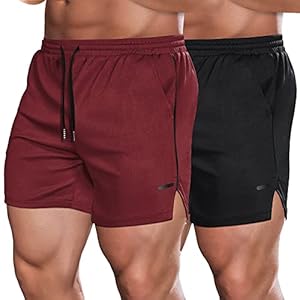
When considering whether HIIT is superior to traditional cardio, you may find yourself pondering the trade-offs between time efficiency and cardiovascular benefits. The intense bursts of activity in HIIT can lead to a quick calorie burn, but does that come at the cost of overall endurance and heart health improvements that traditional cardio offers? It’s a nuanced comparison that warrants exploring each method’s impact on your fitness journey.
Benefits of HIIT
When you engage in High-Intensity Interval Training (HIIT), your body experiences rapid and efficient calorie burning. This form of exercise involves short bursts of intense activity followed by brief rest periods. The intense bursts push your body to its limits, causing it to burn a significant amount of calories both during and after the workout. This phenomenon is known as excess post-exercise oxygen consumption (EPOC), where your body continues to burn calories at a higher rate even after you’ve finished your workout.
Another benefit of HIIT is its time efficiency. Traditional cardio workouts can be time-consuming, requiring long periods of steady-state exercise to achieve the same calorie burn as a shorter HIIT session. With HIIT, you can get a highly effective workout in a fraction of the time. This makes it easier to fit exercise into a busy schedule and can lead to better adherence to a consistent workout routine. The variety of HIIT workouts also helps prevent boredom and keeps you motivated to push yourself to new limits.
Advantages of Traditional Cardio
Traditional cardio offers a steady and reliable method for improving cardiovascular endurance and overall health. Engaging in activities like jogging, swimming, cycling, or brisk walking at a moderate intensity over an extended period can help strengthen your heart, lungs, and muscles. One of the main advantages of traditional cardio is its accessibility – you can perform these exercises virtually anywhere without the need for special equipment.
Additionally, traditional cardio is beginner-friendly, making it a great starting point for those who are new to exercise or returning after a break. It also provides a lower impact option compared to high-intensity workouts, reducing the risk of injury while still offering significant health benefits.
Moreover, traditional cardio can be an excellent stress reliever, helping you clear your mind and improve your mood. By incorporating regular traditional cardio sessions into your routine, you can boost your endurance, burn calories, and support your overall well-being.
Comparison of Caloric Burn
To compare the caloric burn between HIIT and traditional cardio, consider the intensity levels and duration of each workout.
High-Intensity Interval Training (HIIT) involves short bursts of intense exercise followed by brief rest periods. This intense nature of HIIT can lead to a higher caloric burn in a shorter amount of time compared to traditional cardio.
During a HIIT session, your body continues to burn calories even after you’ve finished working out, thanks to the ‘afterburn effect’ or excess post-exercise oxygen consumption (EPOC).
Traditional cardio, on the other hand, typically involves steady-state activities like jogging or cycling at a moderate intensity for a longer duration. While traditional cardio can also help burn calories, it may require more time to achieve the same caloric burn as a shorter HIIT session.
Ultimately, both types of workouts can be effective for burning calories; the choice between HIIT and traditional cardio depends on your preferences, fitness goals, and time constraints.
Considerations for Fitness Goals
Consider your fitness goals carefully before deciding between High-Intensity Interval Training (HIIT) and traditional cardio to ensure that your workout aligns with your desired outcomes. If your primary goal is to improve cardiovascular endurance and overall heart health, traditional cardio may be more suitable. Activities like running, cycling, or swimming at a moderate pace for an extended period can help enhance your endurance levels over time.
On the other hand, if you aim to maximize calorie burn in a shorter amount of time, HIIT might be the better choice. HIIT workouts involve short bursts of intense exercise followed by brief rest periods, which can effectively boost your metabolism and burn calories both during and after your workout.
Additionally, if you’re looking to build muscle while improving your cardiovascular fitness, incorporating a combination of HIIT and traditional cardio into your routine could be the optimal approach. Ultimately, understanding your fitness objectives is key to selecting the most appropriate workout regimen for your needs.
Health and fitness














